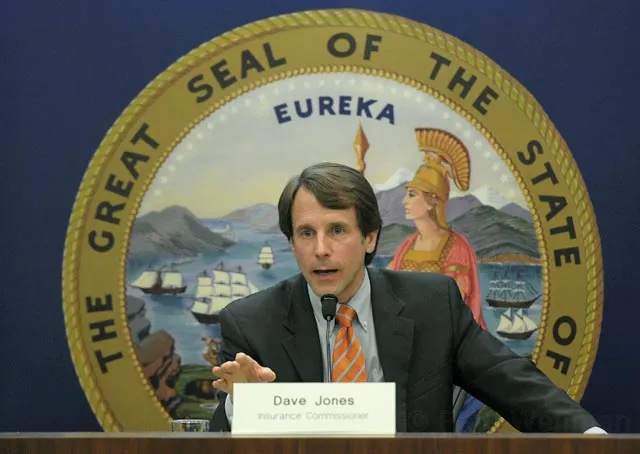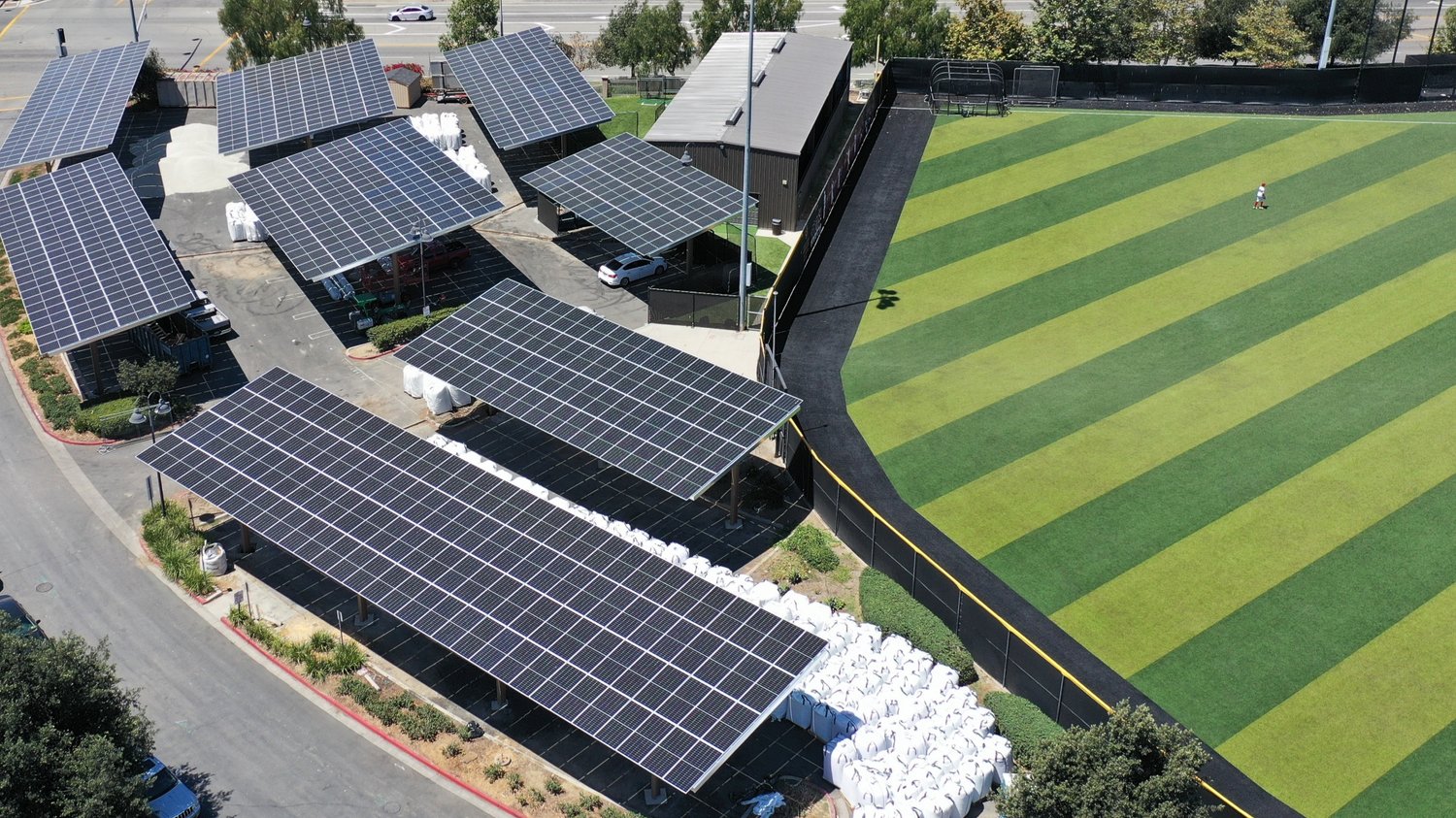Dave Jones was California’s state insurance commissioner eight years ago when the then-novel idea of fossil fuel “stranded assets” caught his attention.
The research from a group called Carbon Tracker made Jones concerned that the insurers he regulated were not considering transition risks: The value of their portfolios might drop by far more than they expected.
Jones wrote to the companies, suggesting they divest from their investments in coal, which he considered the biggest risk. Separately, he required that the insurers account for fossil fuel exposure in their institutional portfolios.
“I approached it from the perspective of a financial regulator,” he told ImpactAlpha. As commissioner, he had a duty to ensure that insurers had adequate reserves to cover whatever risks lay down the road.
In response, a dozen conservative state attorneys general threatened to sue him.
“I may have the unique distinction of being the first financial regulator to get an anti-woke red-state threat to sue,” Jones now says, with a laugh.
Jones was also one of the first regulators to model climate risk scenarios for each of the insurers under his purview. in 2016, he formed the Sustainable Insurance Forum to develop best practices for insurance regulators and supervisors. In 2018, he warned the Financial Stability Board, the international body born out of the 2008 financial crisis, about the impact of climate risk on the insurance industry.
Several years later, Jones’ concerns are hitting home, as well as homeowners. Insurers are retreating from areas hardest-hit by wildfires and extreme weather events, leaving homeowners stranded and state and local governments scrambling. Last year, the US saw 28 weather events that cost $1 billion or more, according to the National Oceanic and Atmospheric Administration, or NOAA, for a total of $93 billion in losses.
It’s not just states with hot weather or those along the coast, either. In August, Vermont was inundated with once-in-a-lifetime flooding. Nearly 28 million people were under a tornado watch in the midwest last March as a storms surged across the Midwest. And Colorado last year set up the state’s first-ever insurer of last resort as wildfires and hail damage pushed private-sector insurers out of the market.
“The evidence is very clear,” says Jones. “We are marching toward an uninsurable future because we are not acting aggressively enough to reduce greenhouse gas emissions.”
“Insurers are rational economic actors and they’re responding.”
What does that future look like, and how can we prepare? In a Q&A with ImpactAlpha, Jones, now director of the Climate Risk Initiative at UC Berkeley’s Center for Law, Energy and the Environment, discussed the role of the federal and state government, the climate hypocrisy at the heart of the insurance business model, and more. This interview has been edited for clarity.
ImpactAlpha: What does an uninsurable future look like? What are the scenarios you’ve modeled?
Dave Jones: First of all, we need to be careful not to do what we did with the National Flood Insurance Program. Property insurers vacated the flood insurance space so Congress created the NFIP because people needed it. But they didn’t require the rates to be risk-adjusted… so although homeowners complain about their rates, they don’t even reflect the risk. Taxpayers who pay for the flood insurance – many of them aren’t facing flood risk, so they’re subsidizing people in high-flood risk areas. We’re putting more people in harm’s way because people keep moving to the high-risk areas. Rates aren’t sending the right signal.
I think the better option is state FAIR plans. (Note: state Fair Access to Insurance Requirements programs in 37 states offer coverage to people who’d otherwise struggle to be insured via the private market. Sometimes called “insurers of last resort,” FAIR plans are usually more expensive and less robust than private-market options). States set the rates and that sends the right signal to the market. Then taxpayers outside where the risk is aren’t subsidizing those risks.
If you’re worried that lower-income and moderate-income households can’t afford it, we could set up something similar to the Affordable Care Act premium subsidies. Health insurance and HMOs that are selling in state exchanges basically set their price based on what it costs to insure people. But low and even moderate income people pay based on a sliding scale. They get a reduction in premium.
So a given state could enact a subsidy to defray the cost of the FAIR plan policy in their state. And I think that’s a better approach than artificially suppressing the rate because you want the home insurance rate to be priced based on risk. They’re sending an important signal to the market and to consumers with regard to what the risk is.
ImpactAlpha: You say a given state could enact a subsidy to defray the cost of a premium.
Would that be a tax credit from the state or a federal one? Both? Where would the subsidy come from?
Jones: Well it would come from the general fund of the state. The state would have to make a decision that it’s going to appropriate funds to provide a premium subsidy. They are state-constructed entities, so the money would have to come from the state.
ImpactAlpha: This may be opening up a whole can of worms but what about many of these states where the need is already pressing because the insurers are already retreating? Florida, Louisiana – these are not the most friendly to government programs.
Jones: There are major philosophical and liberal policy differences across the United States; some states are more conservative and some states are more progressive. I think it’s interesting that in the Affordable Care Act, one part of it was Medicaid expansion. Many “red” states chose not to do Medicaid expansion, much to the dismay of their medical providers as well as the lower income community, but then voters went to the ballots and many of those states have enacted Medicaid expansion at the ballot box.
ImpactAlpha: What might an effort led by the federal government look like?
Jones: I am very skeptical given the history of the National Flood Insurance Program that the federal government is the place to address this issue, other than the continued need for the federal government to move our economy away from fossil fuels and other greenhouse gas emitting industries. Taxpayers who live in areas that don’t face flood risk are subsidizing those who live in areas of flood risk. And then you have the other problem where homeowners with floods repeatedly get a payout from the NFIP and then rebuild again in the very same spot without necessarily doing much more to improve the resilience of the home against flooding.
The other reason is insurance is regulated at the state level. And the states are a lot closer to their insurance markets, and in many ways, have a deeper understanding and expertise with regard to their markets.
The federal government could theoretically create a federal reinsurance facility that would make reinsurance available in those states that are having a hard time purchasing reinsurance. There are policy responses at the federal, state and local level. They may help in the short- and mid-term, but in all likelihood they are going to be overwhelmed by climate change itself.
ImpactAlpha: If we don’t have such policy interventions and private insurers just exit the market, what does that uninsurable future look like? What are the ripple effects?
Jones: You are already beginning to see the cost of insurance and unavailability of insurance in some areas, and the underlying risk of loss has an impact on housing prices. There’s empirical evidence that in areas where these losses are landing it’s impacting housing prices. Insurance unavailability is also [making underwriting take longer] and causing deals to drop out of escrow. So it’s having an impact on real estate value, as you would expect.
And that, in turn, can have an impact on the ability of homeowners and businesses, if they borrow money from the bank, to purchase the property. It can have an impact on their ability to pay their mortgages. We’re not there yet where… it has resulted in defaulted mortgages, but it’s something to pay attention to. Every mortgage loan has a clause in it that allows the lender to force place a home insurance policy if the borrower can’t find insurance. So to the extent that homeowners can’t find insurance and the bank can impose an insurance policy on them, those insurance policies are oftentimes even more expensive than the FAIR Plan. They’re more expensive than anything that’s available in the private market. So now that mortgage payment is going up. That also could lead to increased defaults which could have an impact on the balance sheets of mortgage lenders, and potentially on the secondary market where these mortgages are being sold into.
Bank regulators at the federal and state level need to be watching this very carefully.
Another risk transmission channel is the public entities themselves. They own and operate infrastructure so you have potential additional costs of public entities in rebuilding infrastructure, which places more stress on their balance sheets and has consequences for their ability to do other stuff that they might want to do.
[There is also] what’s called transition risk, which is the risk that investors face in moving away from greenhouse gas-emitting industries as an asset class. We’ve already seen this in the coal industry where years ago there were 20 or 30 coal company bankruptcies and the coal stock indices dropped dramatically.
The insurance industry in the United States has about $536 billion in investments in [fossil fuels], based on the most recent study that came out from my former department in 2023, based on 2019 data. And these are named insurance companies, like State Farm and Allstate, who are investing in the very industry, fossil fuels, which is contributing to climate change, which contributed to their inability to keep writing insurance in California and elsewhere.
So in addition to looking at the risks of these investments, one should ask the question, why does it make sense to keep insuring these industries that are contributing to climate change, which itself is contributing to your inability to write insurance?
ImpactAlpha: What are the possible risks to the whole financial system? Are insurers systemically important financial institutions, are they too big to fail?
Jones: Yes. Climate change generally poses a potential systemic risk to the overall financial system. The Federal Reserve reached that conclusion, the Financial Stability Board, Oversight Commission, Treasury, most insurance regulators, the US Comptroller of the Currency, the credit union regulator, the FDIC, the CFTC – all of them have concluded that climate change does pose a systemic financial risk. But how that lands for their regulated industry varies.
All of them need to be doing more to monitor those risks. And some number of those financial institutions, because of their size and the role they play in the financial system, are systemically important financial institutions.
ImpactAlpha: What is your take on what some people see as “backsliding” on spending on climate solutions by California Gov. Gavin Newsom?
Jones: The Newsom administration’s proposed budget, which cuts or denies funding to a number of important climate programs and laws, including SB 253 (Greenhouse Gas Emissions Disclosure) and SB 261 (Climate Risk Disclosure Reporting) is disappointing. But this is just the start of the budget process and the Legislature – which strongly supports these programs and both bills – will have the opportunity to restore or provide funding for these bills and programs in the actual budget bills sent to the governor.
ImpactAlpha: What innovations are coming from the insurance industry or, separately, private sector innovations for mitigating the negative impacts from climate change?
Jones: Important innovations to mitigate the physical impact of climate change are nature-based mitigations, like ecologically-based forest treatment, [such as] prescribed fires and thinning which reduces the risk of severe wildfires, replanting coastal salt marshes which reduces the risk of loss from storm surge, restoring and protecting coral reefs and mangrove forests, river levee setbacks which reduce flood risk, regenerative agriculture which stores more carbon and reduces water consumption, among others. All of these can be accounted for in insurance modeling, but so far insurers have declined to account for these investments in their underwriting and rate modeling, which needs to change.
Other innovations include home and community “hardening,” which in the hurricane/wind risk context means meeting the “Fortified Home” standard. In the wildfire context, it means roofing materials that are less flammable, protecting the eaves of homes from ember intrusion, no attached structures which can transmit fire to the main house, windows that are less likely to shatter in the face of heat from a fire, defensible space and other measures that make homes more likely to survive the inevitable fires and hurricanes driven by climate change.
ImpactAlpha: You have joked that you were one of the first targets of the anti-woke conservative movement. How did that feel?
Jones: In 2016, I required insurance companies… to report their investments in coal, oil and gas, as well as utilities. I also asked the companies to divest from coal because I concluded coal was a bad investment. And that resulted in a letter from 12 conservative attorneys general threatening to sue me.
And so I wrote back a very thoughtful letter explaining what my regulatory authority was, and that it would be regulatory malpractice not to ask the question. You know, bring it on. They didn’t sue.
I think there’s a lot of bullying and inappropriate use of prosecutorial authority that’s going on right now. Conservative attorneys generals, for political grandstanding purposes, are making threats of litigation to private sector actors and NGOs and investment managers if they think about the risks of climate change. Think about that for a second. That’s just nuts. To tell an insurance company they should not think about the risk of losses that they might be facing from a very real, empirically documented, growing series of events that are being driven by climate change is asking the insurance company not to do business. It’s really a political play and one that could have negative consequences for the financial sector.











